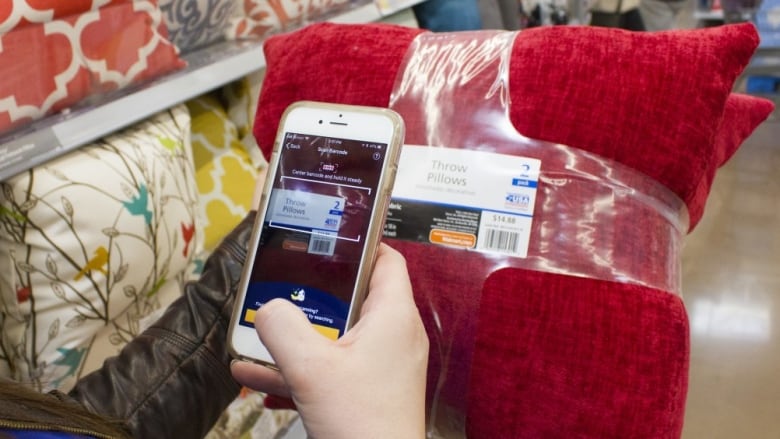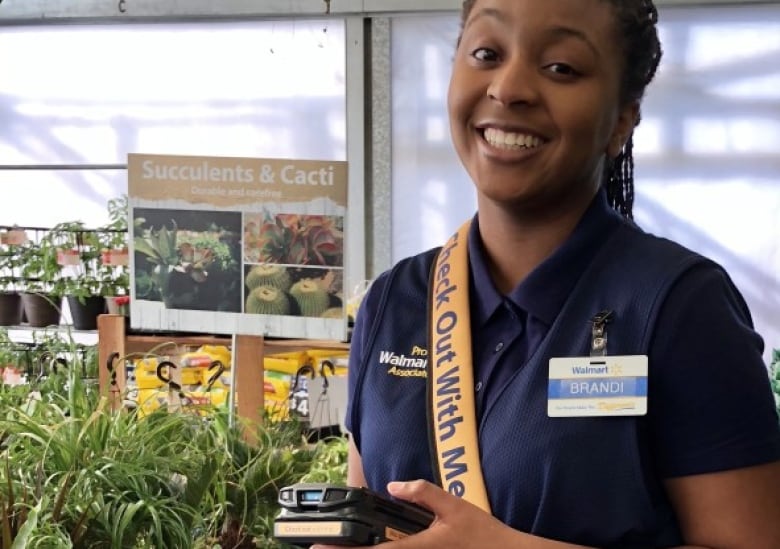Phasing out the checkout line: Retailers race to make shopping more seamless
Retailers are rushing to find ways to woo convenience-craving customers

Walmart has abandoned mobile scan-and-go shopping at its U.S. stores. Customers failed to embrace the new technology, created to help them save time by bypassing the checkout.
With scan and go, customers scanned their own items while shopping and paid for them with the aid of a phone app or a mobile device provided in the store.
As retailers compete to create a more convenient shopping experience, other novel ideas have emerged, such as Amazon's cashierless store and in-home parcel delivery — while you're out.
But not every new concept is winning over consumers, as the experiment with scan and go in the U.S. showed.
The retailer rolled out the test project in about 120 U.S. locations starting this past August. Walmart spokesperson Ragan Dickens said in an interview this week that scan and go had a "low adoption rate," but didn't offer specifics about why shoppers failed to buy in.
Walmart Canada began testing the system in 20 stores in October and hasn't yet made a decision on its fate.
Prefers to interact with a cashier
Customer David Woods in Missouri said he prefers going to a cashier, so he refused to even try scan and go. "It really takes away from a lot of people interaction which I personally like."
He also feared using it would lead to job losses, and questioned why he should do all the work.
"I'm not getting a discount to do that, I'm not getting paid to do that. That's why there's a cashier."
Walmart said the focus of the project was to provide a more seamless shopping experience.
Retail expert Steve Tissenbaum suspects scan and go failed in the U.S. because it asked customers to do too much work. But he says it's important for retailers like Walmart to try new innovations because, with emerging technologies, customers expect more convenience.
"They want it to be as quick and as seamless as it is when they're ordering stuff online," said Tissenbaum, a professor at Ryerson University's Ted Rogers School of Management.
"[Retailers] certainly have to move forward. Otherwise, they'll be left behind."
'Check out with me'
Walmart U.S. has now launched a new project which involves employee interaction.
Called "check out with me," employees equipped with mobile devices scan and check out customer purchases wherever they are in the store. Customers can use debit or credit to pay on the spot. Walmart is currently testing the project at more than 350 U.S. locations in the lawn and garden centre.
"They can scan your items, print you a receipt right there," said Dickens.

In Canada, major grocers — including Walmart — are rushing to offer customers online shopping where people can either pick up their groceries or get them delivered to their home.
Earlier this month, Loblaws announced that this year it plans to "blanket the country" with its online grocery service to the point where it will be accessible to 70 per cent of Canadians.
"What we are intending to do is to create options and to focus on what the customer tells us they want," said CEO Galen Weston in a conference call.
Online shopping giant Amazon is also upping its game for all types of deliveries.
In-car deliveries
In November, the retailer launched Amazon Key, where, via a smart lock, a delivery person gains access to your home while you're out and drops your packages just inside the door. It's currently only available in the U.S., but Amazon hopes to eventually expand the service across the globe.
Although Amazon Key includes stringent security features, the idea has faced criticism from both privacy experts and customers who object to the notion of strangers entering their home.
Last month Amazon launched a less invasive alternative — packages left inside your parked car, provided the car has the proper technology to be unlocked remotely via a phone app.

To enhance the in-store experience, earlier this year the retailer opened to the public its first Amazon Go location, where customers don't even need to scan their items.
Instead, they just take what they want and walk out, thanks to technology that detects when products are removed from store shelves.
Customers are billed via their Amazon accounts.

"There's no self checkout, you just grab stuff and you go," said tech executive Kevin Foreman, who recently visited the store following a business meeting at Amazon in Seattle.
"My biggest surprise was my emotions when I left the store. The Canadian puritan in me felt like I was actually stealing," said Foreman who lives in Seattle but grew up in Medicine Hat, Alberta.
He believes Amazon Go-style stores will eventually become the norm. "If I wanted to, I could get out of there in three seconds, four seconds. You can't beat that level of convenience."